
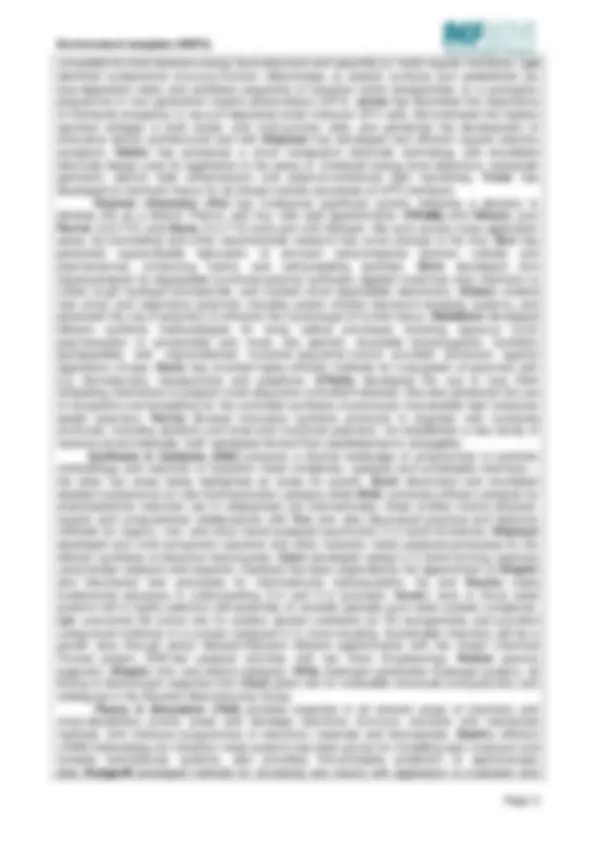
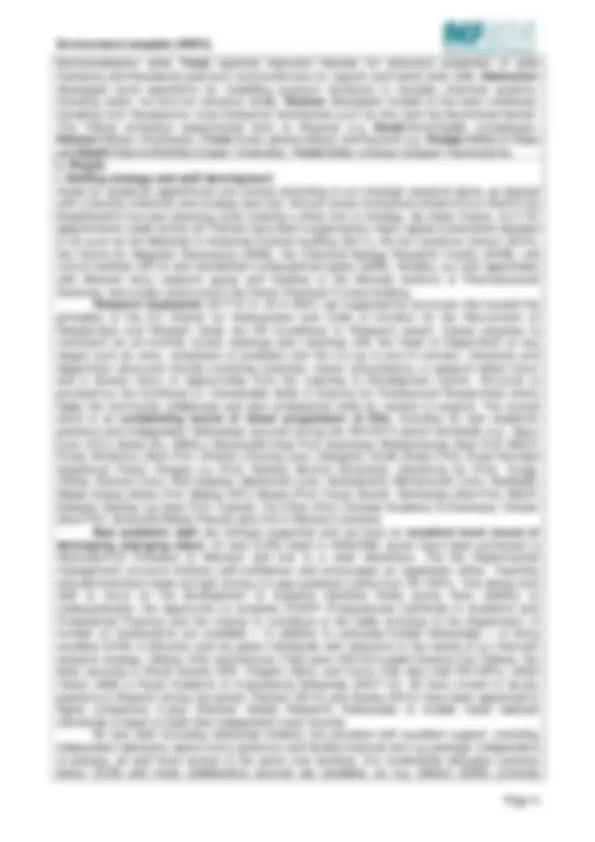
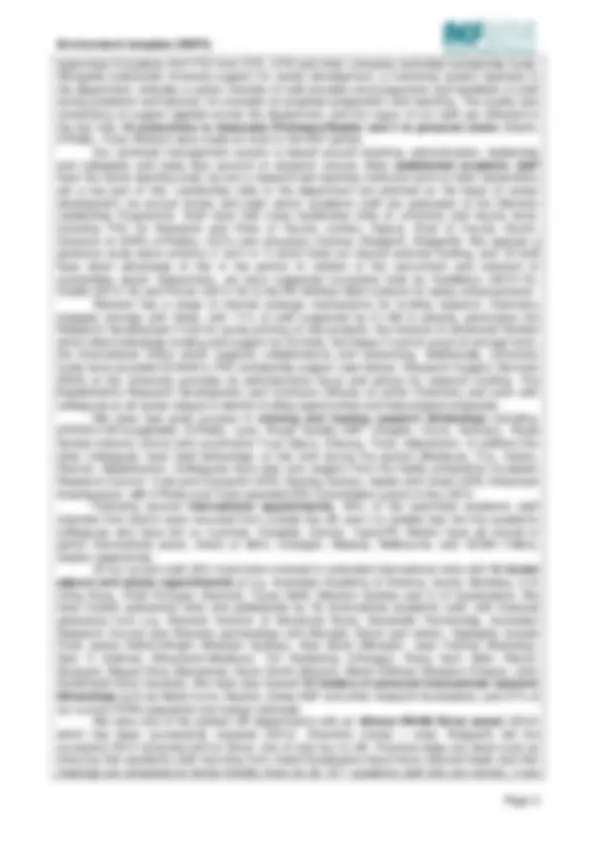
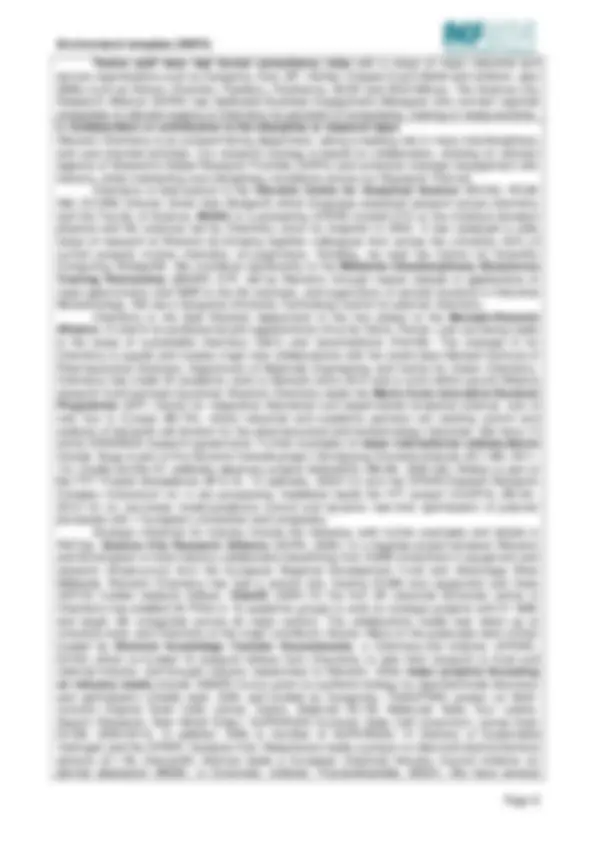
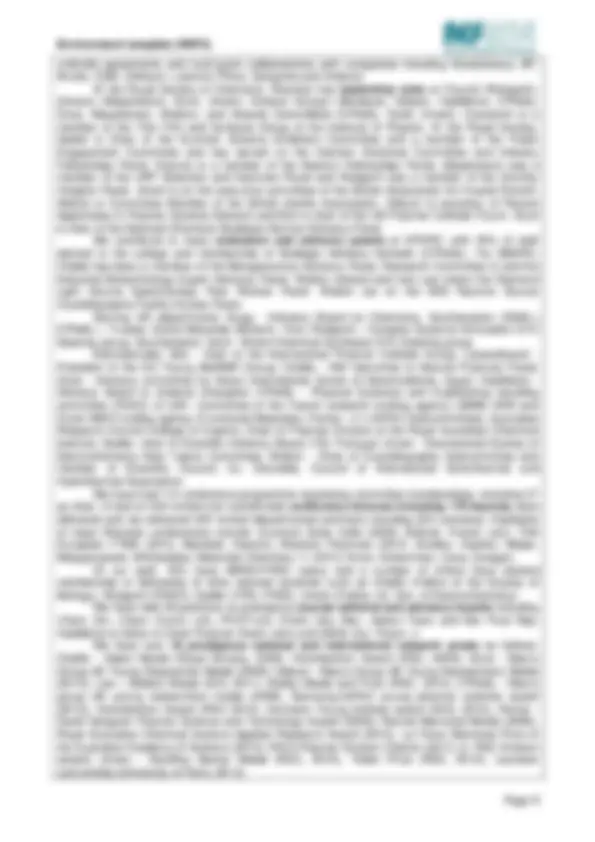


Study with the several resources on Docsity

Earn points by helping other students or get them with a premium plan


Prepare for your exams
Study with the several resources on Docsity

Earn points to download
Earn points by helping other students or get them with a premium plan
Community
Ask the community for help and clear up your study doubts
Discover the best universities in your country according to Docsity users
Free resources
Download our free guides on studying techniques, anxiety management strategies, and thesis advice from Docsity tutors
This document showcases Warwick Chemistry's significant progress since the Research Assessment Exercise (RAE) 2008, including strategic academic appointments, research prizes, fellowships, and increased research spend and PhD student population. The department's research strategy, organized into six Themes, is also discussed, along with collaborations with industry and interdisciplinary training centres.
Typology: Study notes
1 / 9

This page cannot be seen from the preview
Don't miss anything!






Institution: University of Warwick
Unit of Assessment: 8 Chemistry
a. Overview Warwick Chemistry is a thriving, highly collaborative and interdisciplinary unit within a Science Faculty of nine departments. Excellent progress since RAE2008 is evidenced by: 9.4 strategic academic appointments; 12 new external salaried fellowships, including 4 ERC; 18 prestigious research prizes; growth in research support staff (35.3 cf. 22.2 in 2007) and RAs (54 cf. 34 in 2007); major investment including a £24.5M building; research spend of £35.9M (cf. 14.2M in RAE2008) with a 2012/13 income of £8.44M (£242K per FTE); research papers per FTE p.a. increased by 56%; a doubling since 2007 of registered PhD students to 17 6 , with 157 graduated. Chemical research is organised in six non-exclusive, strategic Themes comprising many programmes across the breadth of the subject and its borders with other disciplines: Analytical Science and Instrumentation, Chemical Biology, Interfaces and Materials, Polymer Chemistry, Synthesis and Catalysis, and Theory and Simulation. All staff submitted to UoA8 are based within the Department with one joint appointment with Life Sciences submitted to UoA5. b. Research strategy Warwick Chemistry was rated among the best in the UK in RAE2008. Our research steering committee has a vision of a leading chemistry department, with strong connections to other sciences. We thus seek continuously to improve and broaden core disciplinary excellence whilst expanding strategic and cross-disciplinary activities within the department and beyond. Our research strategy, reaffirmed in 2010 by a Strategic Departmental Review (chaired by Prof. Dudley Williams FRS), was developed in light of new Research Council and EU priorities, Warwick’s new cross-campus Global Research Priorities (GRPs, particularly Materials, Energy, Food, Science & Technology for Health and Innovative Manufacturing), the need to build critical mass in areas of strength and to provide better alignment with the needs of key industrial partners. We have six strategic Themes: Analytical Science & Instrumentation (AS&I); Chemical Biology (CB); Interfaces & Materials (I&M); Polymer Chemistry (Pol) introduced since RAE2008; Synthesis & Catalysis (S&C); and Theory & Simulation (T&S). These thematic groupings allow us to respond in an agile manner to external initiatives, as described in (d). For example, we lead or play a significant role in the above GRPs, numerous interdisciplinary research centres/CDTs and the Monash-Warwick Alliance. We have built several strategic relationships with companies [see (e)]. Since RAE2008 we have invested in some of the best ECR and established talent available internationally (9.4 FTE recruited) including professorial appointments to support major new strategic activities [EPSRC-funded Warwick Centre for Analytical Sciences (O’Connor); Green Chemistry (Lee) and Nanomedicine (Perrier, Davis) with Monash, Australia]. 15 Academic staff held 17 external salaried fellowships including 12 new awards from research council, learned society, charitable trusts and European Research Council (four); two further ERC awards were made in Nov 2013. We have won 18 prestigious national and international research prizes. The University has provided major investment for expansion of our research infrastructure including £24.5M for a new Materials & Analytical Sciences building (MAS, shared with Physics). Excellent progress since RAE2008 is further indicated by the following metrics: (i) very strong growth in research spend (see REF4b) with £35.9M in period (cf. 14.2M in RAE2008), record income levels in 2012/13 (£8.44M, or £242K per FTE p.a.) and £10.6M of new awards announced in the 12 months up to 31 July 2013; (ii) 5 6% increase in the volume of research outputs per FTE p.a.; (iii) doubling of PhD student population with 157.1 graduated in period (see REF4a); (iv) ca 60 % increase in both research support staff (to 35.3) and postdoctoral research assistants (to 54 ). All of this was achieved with only a small increase in submitted staff ( 34 .8 cf. 32.8 in RAE2008). These and other metrics indicate that the environment for chemical research at Warwick has advanced substantially in REF2014. Given the strong upward trajectory in research income and with two new CDTs led from our research Themes, we expect further increases in PhD, research fellow and staff numbers during the next REF period. We are also confident that our vigorous, collegiate and productive department will continue to be strongly supported by the university to grow further in quality and international reach. The following brief exemplars of scientific achievements and strengths demonstrate the success of our strategy and allow us to describe areas for strategic expansion.
Analytical Science & Instrumentation (AS&I) was established as a Theme in 2008 following an RCUK Science & Innovation Award (£3.56 M). As the central pillar of the Warwick Centre for Analytical Science (W-CAS) it runs a popular MSc (AS:MIT) leads a new EPSRC CDT in Molecular Analytical Science and a EU Innovative Doctoral Programme. Key strengths are the development of novel instrumentation and applications of frontier techniques in biology and materials. Lewandowski invented leading solid-state NMR methods for measurement of high resolution protein structures and quantification of slow protein motions. O’Connor created the first reliable method for phasing FT-ICR mass spectrometry data and developed several new methods for studying the structure of biomolecules. RodgerA invented the new technique of Raman linear difference spectroscopy and developed instrumentation and new data analysis methods for this and other polarised spectroscopies. Stavros employed state-of-the-art femtosecond laser techniques to unravel photoactivation mechanisms relevant to biology and cancer metallodrug action, and directly probed hydrogen tunnelling in real time. Unwin pioneered electrochemical imaging techniques capable of visualising electrode surface reactions with unprecedented resolution, whilst Macpherson developed carbon-based electroanalytical sensors offering ultra- high detection sensitivities. Lee developed new multi-dimensional (XPS/DRIFTS/IR/MS) methodologies for in situ and operando analysis of functional materials. Costantini pioneered the use of electrospray ion soft landing for the intact vacuum deposition of functional and fragile (bio)molecules, opening new horizons in fabrication and analysis of (bio)molecule-surface interactions. Chemical Biology (CB) continues to grow from a position of strength in RAE2008, with research in natural product discovery, enzymology and molecular genetics of natural product biosynthesis, and medicinal/bioinorganic chemistry. Synthetic biology and industrial biotechnology will be areas for future growth, through the opportunities they offer to deliver sustainable chemical processes. Challis made advances in genomics-driven discovery of novel bioactive polyketides and enzymology of biosynthesis, including the first structural and mechanistic studies of NRPS- independent siderophore synthetases and the discovery of metalloenzymes that catalyse novel C- H functionalization reactions. Tosin devised chemical probes capable of capturing polyketide biosynthetic intermediates in vitro and in vivo and reconstructed the timing of ring formation for the polyether lasalocid A. Bugg characterised tRNA-dependent ligases MurM and MurN involved in high-level penicillin resistance in Strep. pneumoniae , identified DypB ( Rhodococcus jostii RHA1) as a bacterial lignin peroxidase towards renewables from biomass, and showed using pathway engineering that vanillin is produced from lignin breakdown in this strain. Dixon elucidated the roles of transmembrane domains in membrane proteins, described novel models of protein folding and function and characterised the dynamics and ligand binding characteristics of an important lectin. Blindauer revealed the structure of the major zinc site in mammalian plasma and its dependence on physiological fatty acid levels, the identity of the biomarker ischemia-modified albumin, and mechanisms for biological zinc/cadmium discrimination. RodgerA measured and modelled assemblies of biomacromolecules including those involved in bacterial cell division. In medicinal chemistry Fox discovered anti-inflammatory compounds with sub-nanomolar potency, Shipman identified the anti-cancer pharmacophore in the naturally occurring kigamicins, Sadler discovered several novel organometallic and photoactivatable anticancer complexes, and elucidated novel mechanisms of action, including redox, catalytic and coenzymatic processes, while Scott ’s family of metallohelices include potent antibiotic and anticancer compounds. Interfaces & Materials (I&M) research is focused on the elucidation and control of interfacial properties, and the development and investigation of structure-function relationships in new materials. Research in this Theme will be further boosted by Macpherson ’s leadership in an interdisciplinary, industry-partnered multi-site EPSRC CDT in Diamond Science & Technology continuing her pioneering work on doped carbon materials. Unwin has obtained major new insights in interfacial and electrochemical processes at the nanoscale, and developed a radical new understanding of the activity of advanced carbon materials and structure-activity measurements of individual electrocatalytic nanoparticles. Rourke elucidated key aspects of structure and reactivity for graphene oxide, proposing a new 2-phase model, which has gained widespread acceptance. Walton created rational syntheses of a wide range of inorganic materials, developed oxides as fuel cell catalysts and water resistant building products, and made the first observations of MOF crystallisation. Costantini used UHV-STM to reveal the basis for enantioselective self-assembly of biomolecules, developed rules for 2D MOF construction and
biomineralisation while Troisi reported improved theories for electronic properties of solid interfaces and disordered polymeric semiconductors for organic and hybrid solar cells. Habershon developed novel algorithms for modelling quantum dynamics in complex chemical systems, including water, ice and ion solvation shells. Notman developed models of bio-nano interfaces, revealing how therapeutics cross biological membranes such as skin and the blood-brain-barrier. The Theme enhances experimental work at Warwick e.g. Deeth /Scott/Sadler (complexes), Notman /Gibson (interfaces), Troisi /Jones (photovoltaics) and beyond e.g. Rodger /Meldrum/Stipp and Deeth /Halcrow/Raithby/Cooper (materials), Troisi /Salleo (charge transport mechanisms). c. People i. Staffing strategy and staff development Areas for academic appointment are chosen according to our strategic research plans, as aligned with university initiatives and strategy [see (b)]. Annual review of physical infrastructure informs the Department’s five-year planning cycle creating a direct link to strategy. By these means, 9.4 FTE appointments made across all Themes have been supported by major capital investments detailed in (d) such as the Materials & Analytical Science building (2011), the Ion Cyclotron Centre (201 0 ), the Centre for Magnetic Resonance (2008), the Chemical Biology Research Facility (2008), cell culture facilities (2013) and refurbished computational space (2008). Notably, our joint appointees with Monash have research space and facilities in the Monash Institute of Pharmaceutical Sciences, and (under construction) the Green Chemical Futures building. Research Assistants (54 FTE cf. 34 in 2007) are supported by structures that exceed the principles of the EC Charter for Researchers and Code of Conduct for the Recruitment of Researchers and Warwick holds the HR Excellence in Research award. Career progress is monitored via six-monthly review meetings plus meetings with the Head of Department at key stages such as entry, completion of probation and the run-up to end of contract. University and department resources include mentoring schemes, career consultations, a research fellow forum and a diverse menu of opportunities from the Learning & Development Centre. Structure is provided by the Certificate in Transferable Skills in Science for Postdoctoral Researchers which helps the community collaborate and gain professional skills for careers in science. The overall result is an outstanding record of career progression of RAs , including 35 new academic positions and independent fellowships secured during the REF2014 period worldwide e.g.: Barry [Lect. KCL]; Becer [SL, QMUL]; Bertoncello [Asst Prof, Swansea]; Bhattacharyay [Asst Prof, IISER, Pune]; Bruijnincx [Asst Prof, Utrecht]; Cheung [Lect, Glasgow]; Guille [Assoc Prof, École Normale Supérieure Paris]; Hongke Liu [Prof, Nanjing Normal University]; Jianzhong Du [Prof, Tongji, China]; Ronconi [Lect, NUI Galway]; Mantovani [Lect, Nottingham]; Martsinovich [Lect, Sheffield]; Meiqin Zhang [Assoc Prof, Beijing UST]; Miyata [Prof, Paran, Brazil]; Mukherjee [Asst Prof, IISER, Kolkata]; Stanley Lai [Asst Prof, Twente]; Tao Chen [Prof, Chinese Academy of Sciences]; Vinatier [Asst Prof, Université Blaise Pascal]; plus five in Warwick sciences. New academic staff are strongly supported and we have an excellent track record of developing emerging talent. Of nine ECRs listed in RAE2008, seven have been promoted to Associate/Full Professor at Warwick and one to a chair elsewhere. The flat Departmental management structure bolsters self-confidence and encourages an egalitarian ethos. Teaching and administrative loads are light during a 5 - year probation (rising from 30-100%). This allows new staff to focus on the development of research identities whilst giving them visibility to undergraduates, the opportunity to complete PCAPP (Postgraduate Certificate in Academic and Professional Practice) and the chance to contribute to the wider activities of the Department. A number of mechanisms are available – in addition to externally-funded fellowships – to bring excellent ECRs to Warwick and we select individuals with reference to the needs of our thematic research strategy. Gibson (Pol) and Notman (T&S) were HEFCE-funded Science City Fellows, the latter securing a Royal Society-URF. Chaplin (S&C) and Corre (CB) also hold RS-URFs, whilst Hatton (I&M) a Royal Academy of Engineering fellowship (2007-12). All have moved to faculty positions at Warwick during the period. Pattison (2012) and Davies (2013) have been appointed to highly competitive 5 - year Warwick Global Research Fellowships to enable these talented individuals to begin to build their independent track-records. All new staff (including fellowship holders) are provided with excellent support, including independent laboratory space and a generous and flexible financial start-up package. Independent of position, all staff have access to the same core facilities. Our studentship allocation systems favour ECRs and many collaborative sources are available, so e.g. Gibson (2009) currently
supervises 9 students (6.8 FTE) from DTC, DTG and other university-controlled scholarship funds. Alongside substantial university support for career development, a mentoring system operates in the department, whereby a senior member of staff provides encouragement and feedback to staff during probation and beyond, for example on proposal preparation and teaching. The quality and consistency of support applied across the department, and the vigour of our staff are reflected in the fact that 10 promotions to Associate Professor/Reader and 4 to personal chairs (Deeth, O’Reilly, Troisi, Walton) were made on merit in the REF period. Our workload management system is based around teaching, administration, leadership and collegiality and takes less account of research volume. Most established academic staff have the same teaching load; we are a research-led teaching institution and our best researchers are a key part of this. Leadership roles in the department are planned on the basis of career development via annual review and eight senior academic staff are graduates of the Warwick Leadership Programme. Staff have had many leadership roles at university and faculty level, including PVC for Research and Chair of Faculty (Jones), Deputy Chair of Faculty (Scott), Directors of GRPs (O’Reilly), CDTs and University Centres (RodgerA, RodgerM). We operate a generous study leave scheme (1 term in 7) which does not require external funding, and 18 staff have taken advantage of this in the period. In relation to the recruitment and retention of outstanding senior researchers, we have supported successful bids by Haddleton (2010-15), Challis (2013-18) and Perrier (2013-18) to the RS Wolfson Merit scheme for salary enhancements. Warwick has a range of internal strategic mechanisms for funding research. Chemistry engages strongly with these, with 71 % of staff supported by £1.4M in awards, particularly the Research Development Fund for pump priming of new projects, the Institute of Advanced Studies which offers fellowship funding and support for EU bids, the Impact Fund for proof-of-concept work, the International Office which supports collaborations and networking. Additionally, University funds have provided £2.84M in PhD scholarship support (see below). Research Support Services (RSS) at the University provides an administrative focus and advice for research funding. The Department’s Research Development and Contracts Officers sit within Chemistry and work with colleagues at all career stages to identify funding opportunities and help prepare proposals. We have had great success in winning and hosting research fellowships including: EPSRC-CAF/Leadership (O’Reilly, Lee), Royal Society-URF (Chaplin, Corre, Notman), Royal Society-industry (Dove) and Leverhulme Trust (Barry, Cheung, Troisi, Habershon). In addition five other colleagues have held fellowships of this kind during the period (Blindauer, Fox, Hatton, Stavros, Macpherson). Colleagues have also won support from the highly-competitive European Research Council: Troisi and Costantini (ERC Starting Grants), Sadler and Unwin (ERC Advanced Investigators), with O’Reilly and Troisi awarded ERC Consolidator grants in Nov 2013. Following several international appointments , 40 % of the submitted academic staff originate from and/or were recruited from outside the UK and it is notable that the five academic colleagues who have left us (Lochner, Drewello, Derrick, TaylorPR, Walsh) have all moved to senior international posts; chairs at Bern, Erlangen, Massey, Melbourne, and VESKI Fellow, Deakin respectively. Of our current staff, 65% have been involved in extended international visits with 15 formal adjunct and similar appointments at e.g. Australian Academy of Science , Austin, Berkeley, U of Hong Kong, ITQB Portugal, Stanford, Texas A&M, Western Sydney and U of Queensland. We have hosted substantial visits and sabbaticals by 35 international academic staff, with financial assistance from e.g. Warwick Institute of Advanced Study, Santander Partnership, Australian Research Council and Warwick partnerships with Monash, Brazil and others. Highlights include Profs Janice Aldrich-Wright (Western Sydney), Alan Bond (Monash), Jean Fréchet (Berkeley), Sam H Gellman (Wisconsin-Madison), Tim Keiderling (Chicago), Klaus Kern (Max Planck, Stuttgart), Miquel Pons (Barcelona), Kevin Smith (Boston), Martin Stillman (Western Ontario), John Sutherland (East Carolina). We have also hosted 19 holders of personal international research fellowships such as Marie Curie, Newton, Swiss NSF and other research foundations, and 57 % of our current PDRA population are foreign nationals. We were one of the earliest UK departments with an Athena SWAN Silver award (2010) which has been successfully renewed (2013). Chemists (Jones – chair, RodgerA) led the successful 2013 University bid for Silver: one of only four in UK. Practical steps are taken such as ensuring that academic staff returning from maternity/adoptive leave have reduced loads and that meetings are scheduled at family-friendly times for all. Of 7 academic staff who are women, 3 are
TOF (tandem), LC-MS, HCT-plus Ion Trap. An OD Gemini CCD single crystal diffractometer, four modern powder diffractometers and two further high-resolution/thin-film instruments allowing studies under a very wide range of non-ambient conditions are housed in a purpose-built diffraction suite. The GPC facility of 13+ instruments includes high temperature and multiple detectors and is complemented by various particle size and light-scattering instruments alongside a TAMIII calorimeter and modern TGA/DTA and DSC. HPLC-coupled ICP-OES, ICP-MS and AA are provided. We have a world-class circular and linear dichroism spectroscopy facility. Chemistry is a major user of an outstanding electron microscopy facility housed in the MAS building; a doubly- corrected ARM200F TEM/STEM has a Schottky FEG and two CEOS hexapole aberration correctors that enable imaging and analysis of individual atoms sits alongside two workhorse TEMs, two SEMs with EDX, EBSD, CL and cryo-transfer capabilities, FIB/SEM, several AFMs, and optical microscopes. Large dedicated suites of computational research workstations complement university facilities which include a 6000 core Infiniband massively parallel cluster plus thousands of other cores. Through Warwick's leadership of the EPSRC MidPlus Regional Centre for Computation the department has excellent access to a 4000 node cluster and a petabyte data store and we are substantial users of national and European high performance computing facilities. At least seven groups use Harwell Complex, Diamond Light Source and ISIS facilities. Our dramatic improvement in income and output per academic has been facilitated by an increase to 35.3 FTE in support staff for research (5 scientific, 17.7 technical, and 12.6 admin) cf. 22.2 in 2007. Instrumentation specialists e.g. NMR (2 FTE), MS (2) XRD (0.5) make important scientific contributions and have co-published 121 papers. Workshop technicians are intimately engaged in instrument design and development and have contributed significantly to Warwick Chemistry’s reputation in this area e.g. electrical/IT (4 FTE), glass-blowing (1), mechanical ( 2 ). Specialist staff are also attached to research teams and areas for continuity of expertise and maintenance of a strong safety culture. As part of an ambitious programme of building, refurbishment and strategic expansion, Warwick invested £28.5M in Chemistry’s infrastructure and facilities since 2008 including £9.2M of new capital equipment. Major investments include: the Materials & Analytical Sciences (MAS) building (£24.5M, 50:50 with Physics, 2011 ) is an outstanding research-only facility and houses the groups of O’Reilly, Dove, Hatton and Walton, alongside state-of-the art equipment suites for materials and molecular characterisation; for mass spectrometry the Ion Cyclotron Centre (£1.2M, 2010) was equipped with a new 12T FTICR (£1. 34 M) with an additional £1.0M in new service instrumentation in the main chemistry building; our superb NMR facilities have been improved by provision of new instruments and upgrades (£480k) and a new laboratory (£217k); a state-of-the-art Solar Cell Research Facility was built (£3.3M) and equipped (£980K); a new Chemical Biology Research Facility was established (£1.5M); a UHV Scanning Probe Microscopy lab was newly established (£1.1M); refurbishment of computational lab space (£ 147 k) was conducted alongside major new computing installations (£817K); the Science City Research Alliance made a substantial contribution to >£1M of new polymer characterisation equipment. In addition to the investments in research infrastructure above we completed in 2012 superb new teaching laboratories (£3.6M). Plans have been submitted for a refurbishment or new build of synthetic research laboratories (~£10M, increasing fume hoods from 120 to 150 ). Chemistry will also benefit from the planned major new Interdisciplinary Biosciences Research Building. Our plans for investment in equipment are based on a recent review of capacity and bids will be made for: solution NMR with 13 C-optimized cryoprobe; high resolution MALDI-TOF/TOF instruments; Fast Scan AFM; high sensitivity single crystal XRD among others. Annual research income has increased more than threefold from £2.58M in 2006/7 to £8.44M today, with a total spend of £35. 9 M plus £1.38M in-kind in REF2014 (see REF4b/c). Awards have grown strongly in size and number such that the average annual income per FTE has tripled to £242K in 2012/13 cf. 2006/7. Average external income won per FTE during the period is £1.03M. This growth has come from all major funders. Research Council income has more than doubled to £19.4M, mainly from EPSRC, BBSRC, RS and MRC. Industrial income (£5.1M; 78% of staff have held contracts), EU funders including ERC (£3.6M), and UK charities (£1.2M) have all increased as part of our strategy to diversify income streams. Future growth is confidently predicted with £10.6M of new awards announced in the 12 m period up to 31 July 2013. Warwick has established a £7M p.a. equipment fund to support RCUK bids and will establish Research Technology Platforms in key areas to ensure the sustainability of our state-of-the art facilities.
Twelve staff have had formal consultancy roles with a range of major industrial and service organisations such as Syngenta, Dow, BP, Henkel, Colgate Exxon-Mobil and Unilever, also SMEs such as Alstom, Chemtex, Paintbox, Polytherics, SEEK and SGS-MScan. The Science City Research Alliance (SCRA) has dedicated Business Engagement Managers who connect regional companies to relevant experts in Chemistry for provision of consultancy, training or measurements. e. Collaboration or contribution to the discipline or research base Warwick Chemistry is an outward-facing department, taking a leading role in many interdisciplinary and user-oriented activities. Our research strategy is based on collaboration, drawing on relevant aspects of Warwick’s Global Research Priorities (GRPs) and extensive strategic engagement with industry, while maintaining core disciplinary excellence across our Research Themes. Chemistry is lead partner in the Warwick Centre for Analytical Science (WCAS, RCUK S&I, £3.56M, Director Unwin then RodgerA) which integrates analytical research across chemistry and the Faculty of Science. MOAC is a pioneering EPSRC-funded DTC at the interface between physical and life sciences led by Chemistry since its inception in 2003. It has catalysed a wide range of research at Warwick by bringing together colleagues from across the university; 60% of current projects involve chemistry co-supervision. Similarly, we lead the Centre for Scientific Computing (RodgerM). We contribute significantly to the Midlands Interdisciplinary Bioscience Training Partnership (BBSRC DTP, led by Warwick) through master classes in applications of mass spectrometry and NMR to the life sciences, and supervision of several students in Industrial Biotechnology. We are a Syngenta University Technology Centre for polymer chemistry. Chemistry is the lead Warwick department in the first phase of the Monash-Warwick Alliance. A total of six professorial joint appointments (thus far Davis, Perrier, Lee) are being made in the areas of sustainable chemistry (S&C) and nanomedicine (Pol/CB). The strategic fit for Chemistry is superb and creates major new collaborations with the world class Monash Institute of Pharmaceutical Sciences, Department of Materials Engineering and Centre for Green Chemistry. Chemistry has made 25 academic visits to Monash since 2012 and a multi-million pound Alliance research fund has been launched. Warwick Chemistry leads the Marie Curie Innovative Doctoral Programme (IDP) Centre for integrative theoretical and experimental analytical science , one of only four in Europe (€3.7M), where industrial and academic partners are tackling control and analysis of bacterial cell division for the pharmaceutical and biotechnology industries. We have 15 active ERASMUS research agreements. Further examples of major international collaborations include: Bugg is part of the Genome Canada project Harnessing microbial diversity ($11.9M, 2011- 14); Challis led the EC antibiotic discovery project ActinoGEN (€9.4M, 2005-09); Walton is part of the FP7 Project Macademia (€7.6 M, 15 partners, 2009- 13 ) and the EPSRC/Harwell Research Complex Consortium on in situ processing; Haddleton leads the FP7 project COOPOL (€2.5m, 2012 - 15) on non-linear model-predictive control and dynamic real-time optimisation of polymer processes with 7 European universities and companies. Strategic initiatives for industry include the following (with further examples and details in REF3a). Science City Research Alliance (SCRA, 2008 - ) is a flagship project between Warwick and Birmingham in local industry collaboration benefitting from £ 58 M investment in equipment and research infrastructure from the European Regional Development Fund and Advantage West Midlands. Warwick Chemistry has had a central role, hosting £3.8M new equipment and three HEFCE funded research fellows. ChemD (2004-13) the first UK industrial doctorate centre in Chemistry has enabled 30 PhDs in 16 academic groups to work on strategic projects with 21 SME and larger UK companies across all major sectors. The collaborative model was taken up at university level, and Chemistry is the major contributor thereto. Many of the graduates were further funded by Warwick Knowledge Transfer Secondments ; a Chemistry-led initiative (EPSRC, £570k) which co-funded 16 research fellows from Chemistry to take their research to local and national industry, and brought industry researchers to Warwick. Other major projects focussing on industry needs include: BBSRC sLoLa grant on synthetic biology for agrochemicals discovery and optimisation (Challis lead, £5M, part-funded by Syngenta); TSB/EPSRC project on Multi- Junction Organic Solar Cells (Jones, Hatton, Shipman £2.1M, Molecular Solar, Kurt Lesker, Asylum Research, New World Solar); SUPERGEN Excitonic Solar Cell consortium (Jones lead, £3.3M, 2009-2013). In addition, Wills is member of SUPERGEN 14 Delivery of Sustainable Hydrogen and the EPSRC Catalysis Hub; Macpherson leads a project on diamond electrochemical sensors (£1.1M, Element6); Notman leads a European Chemical Industry Council initiative on dermal absorption (€500k, U Cincinnati, Unilever, Procter&Gamble, BASF). We have several